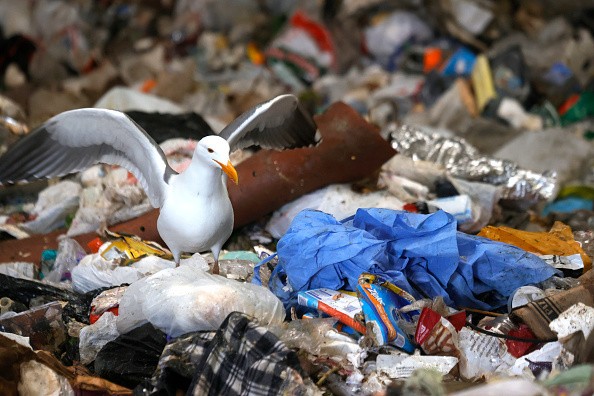Researchers found a new disease called 'Plasticosis' that could harm seabirds' digestive systems. The condition can damage stomach tissues of seabirds that could lead to starvation or death.
There is a growing concern over the impact of plastic and microplastic pollution on the environment and animals.
According to National Oceanic and Atmospheric Administration (NOAA), microplastic refers to less than five millimeters long plastic.
As the plastic breaks into tiny pieces, it is expected to unleash more harm on oceans and seabirds.
The research findings were published in the Journal of Hazardous Materials.
Plasticosis impact on seabirds

The researchers explained the harmful effects of small plastic fragments on animals, adding that about 1200 marine species could suffer from plastic consumption.
Meanwhile, the study emphasized that the pollution problem could increase the environmental impacts on marine biodiversity.
The report is also published in the Natural History Museum.
On the coast of Australia, the researchers explained that flesh-footed shearwaters are affected by microplastic pollution, showing signs of contamination.
Research coauthor Dr. Alex Bond said the study was the first time to look into the stomach issue and impact of plastic particles. Dr. Bon is also from Principal Curator and Curator in Charge of Birds at the Museum.
The seabirds' survival is also affected by the scar tissues due to sharp microplastic. The report added that it could affect the seabirds' digestive tracts.
Because of the scars on their stomachs or digestive systems, it would become challenging for seabirds to heal or recuperate. The birds can also suffer from digestion difficulties.
Furthermore, the study examined the possible effects of plastic consumption on the tubular glands.
The adverse effects on the said glands could affect the health of the seabirds, making them vulnerable to potential infection.
The researchers underscored the other effects of plastic consumption
- Tissue damage
- Reduced growth due to starvation affects their stomach
- Behavioral changes
Other impacts of plastic pollution on seabirds
The Ocean Blue Project added that about 15 to 51 trillion plastic pieces pollute the oceans. The report raised concerns over the massive amount of plastics that go into bodies of water.
In addition, the report explained that millions of seabirds could suffer from plastic pollution every year.
Ocean Blue Project noted that dead seabirds showed shreds of plastic inside their stomach.
According to UN Environment Programme, the report explained the disturbing trends of plastic pollution, adding that plastic could not disappear from Earth.
As a result, the commitment of countries and communities to reduce plastic consumption is a crucial step.
The pressing problem of plastic pollution could have long-term effects on marine species and the environment.
Cleaning the oceans for plastic debris is also helpful in removing plastics from oceans.
Furthermore, the solid waste management of plastic is also essential. Countries should develop an effective policy against plastic pollution.
Related Article : Extremely Rare Songbird Dusky Tetraka in Madagascar Shows First Sightings in 24 Years
For more similar stories, don't forget to follow Nature News.
© 2025 NatureWorldNews.com All rights reserved. Do not reproduce without permission.





